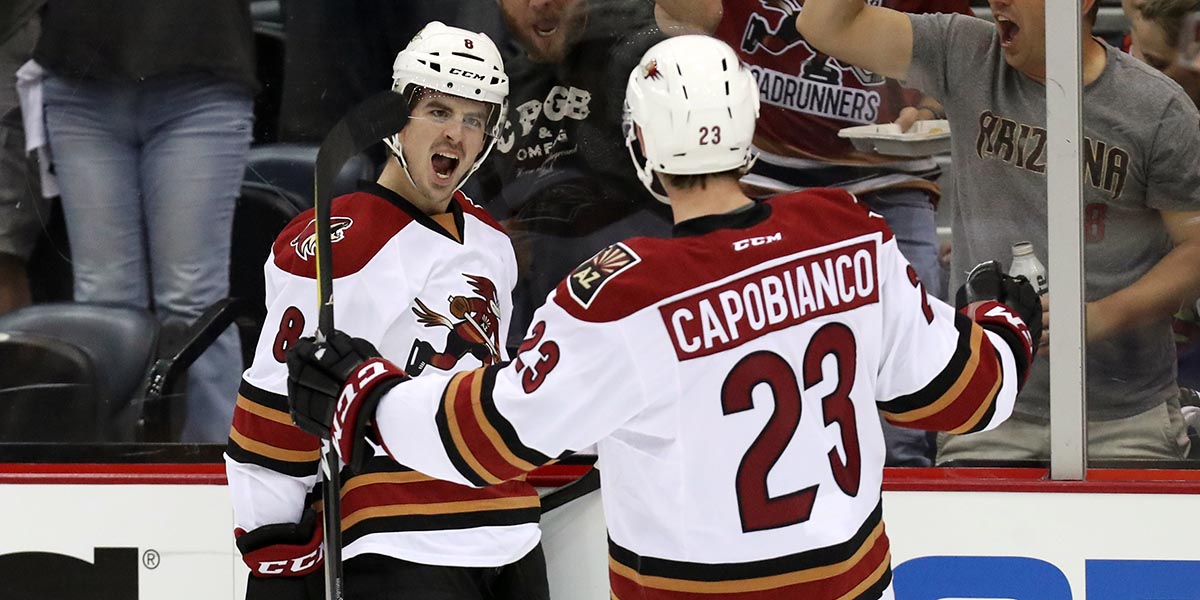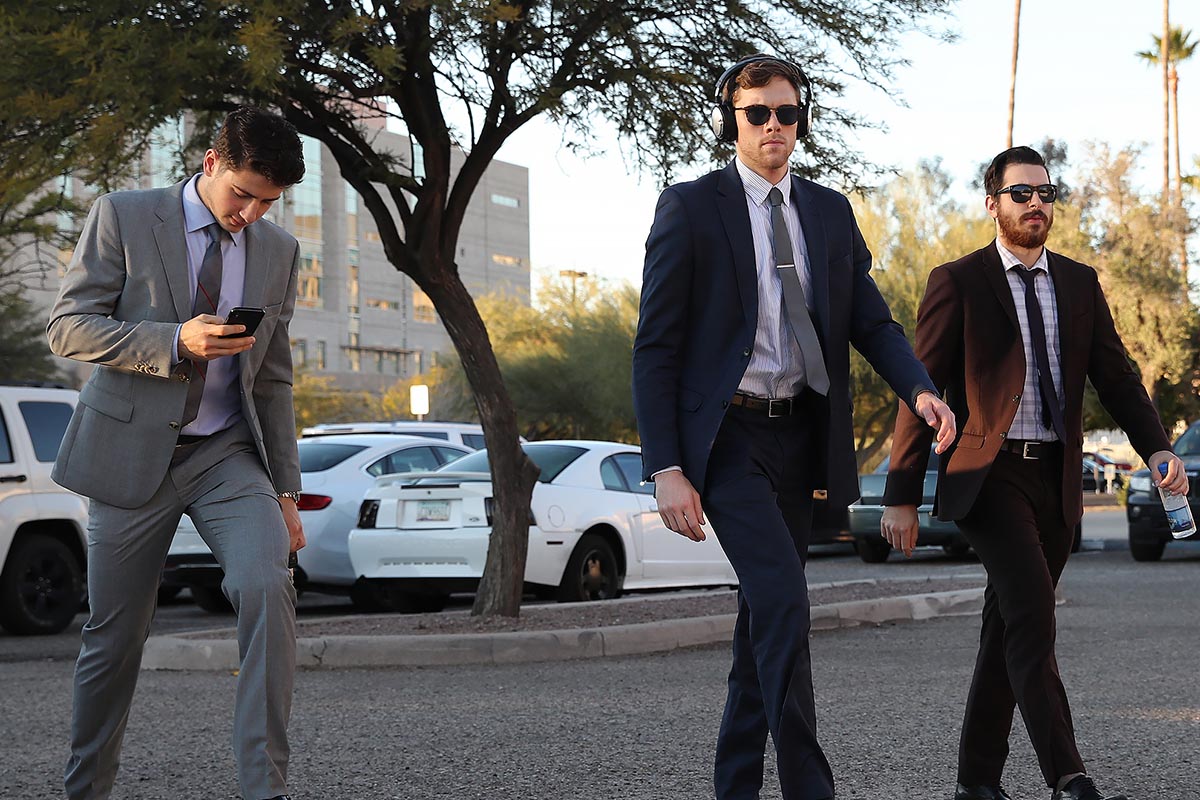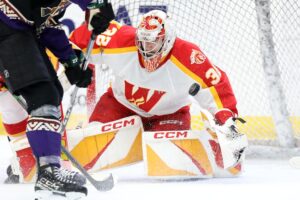by Alexander Kinkopf | AHL On The Beat
Maybe it’s the sunshine.
Maybe it’s the comfortable size for a young prospect in transition, looking to find footing in a city with a metropolitan population just shy of a million.
Maybe it’s the perfect feel for a veteran, still in the thick of his career, seeking the harmony of a settled family life in a quiet community.
Maybe it’s the limelight afforded for being the only professional team in a city that truly embraces its own.
Maybe it’s just the sunshine.
Or, perhaps it’s just a rather out-of-the-box confluence: ice hockey and the Southern Arizona desert, a near-perfect match, entitled the Tucson Roadrunners.
“I would debate with anyone that [Tucson is] the best city in the AHL,” said forward Conor Garland, days before earning his first-ever NHL recall to the Arizona Coyotes. Garland, who hails from Scituate, Massachusetts, had spent two-plus seasons with the Roadrunners.
The weather’s the easy part: Tucson averages more than 300 days of sunshine per year with an annual median temperature just north of 70 degrees Fahrenheit.
“You go to the rink, then back outside and the sun is always shining, you see all of the mountains,” forward Jens Looke, a native of Gavle, Sweden, said, painting a picture. “It’s something special, I’m not really sure how to explain it.”
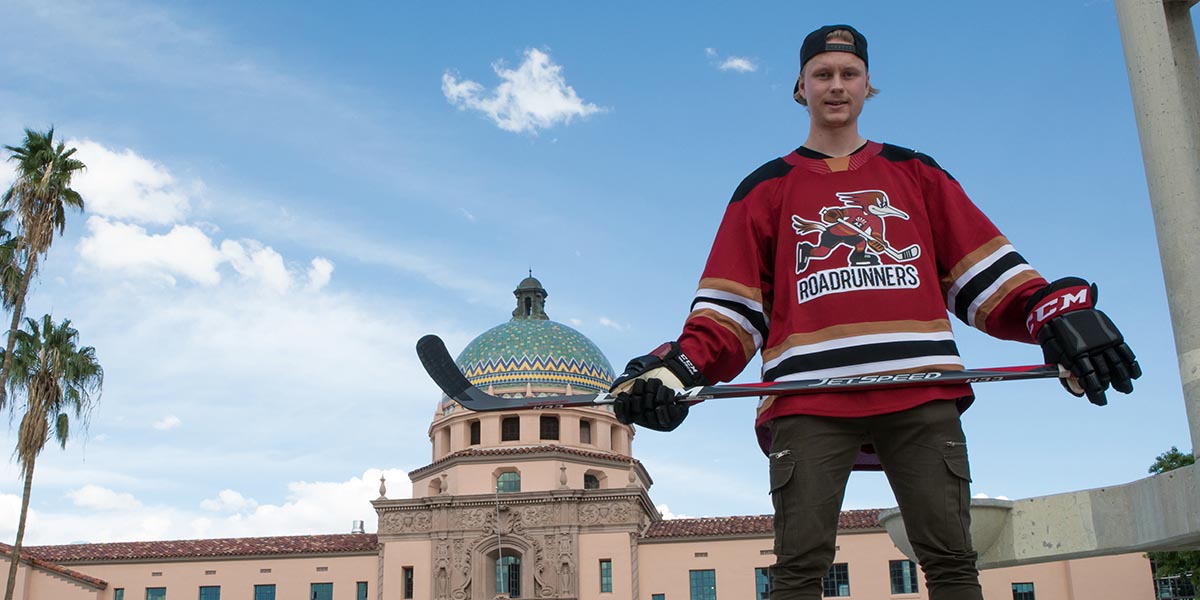
“It’s a great location for us, it’s a great city,” said forward Lane Pederson, who grew up in Saskatoon, Saskatchewan. “You can’t really beat all year-round having the option to sit by the pool and show up to the rink in shorts, flip-flops and a t-shirt. Just that aspect of it is unreal.”
There is, after all, life outside and away from the game.
“Away from the rink, living here really helps ease your mind, to take your mind off of hockey if things aren’t going your way,” Pederson added. “There’s a lot to do away from the rink and that just makes coming in every day that much sweeter.”
Roadrunners captain Dakota Mermis, from Alton, Illinois, has seen the sport take him to locations such as Green Bay, Wisconsin and London, Ontario. He has been in Tucson since the team relocated from Springfield, Massachusetts in 2016, after his rookie season.
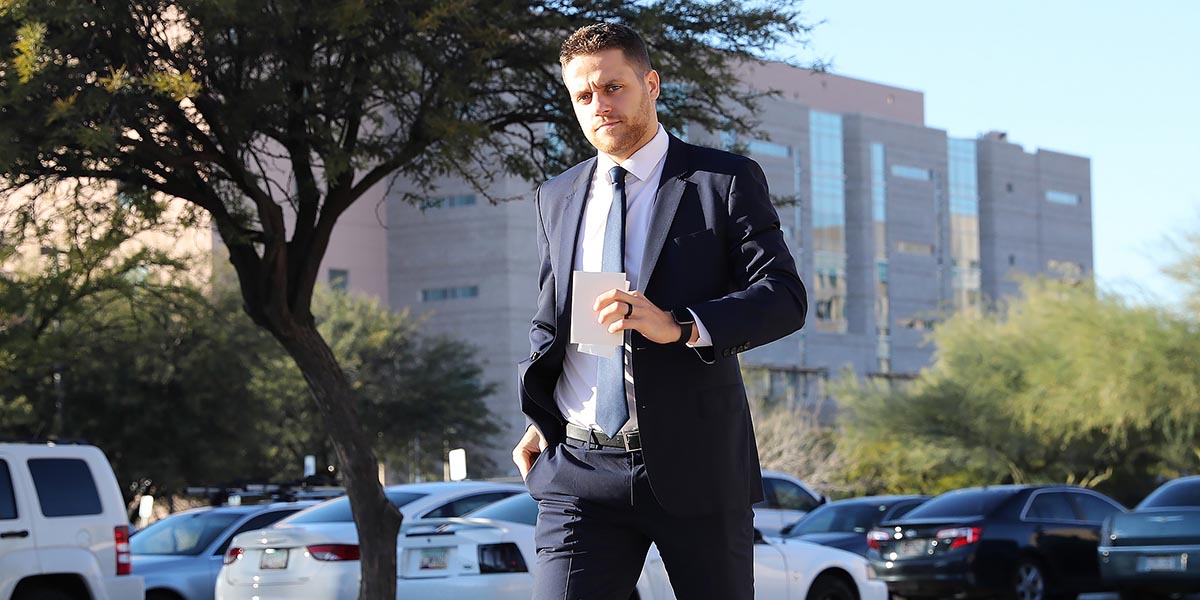
“Here, you’re able get away from hockey in ways that traditionally you can’t,” he said “To be able to go out to eat and sit outside on the patio year-round, to go lay by the pool and have a nap in the afternoon, that’s something that’s unique to playing here that not a lot of guys get to do.”
A 68-game AHL schedule is grueling. The long bus rides. The airport waits. The 5 a.m. wake-up calls. The Roadrunners spend more than half of their season on the road. Days are often sacrificed to travel, which makes home much sweeter and much more important.
“When we’re home there’s a lot for us to do, down near [the University of Arizona] campus a lot of the guys go grab lunch, it’s a great place to sit in the sun and hang out,” Pederson said. “For us, there’s a lot of young people down there, a lot of people our age to see, so it makes it kind of a welcoming environment, something that allows us to acclimate and feel more comfortable.”
Travel isn’t the only thing that can sap the body. The actual games take the toll, too, of course. Trevor Cheek, who has been in a Roadrunners jersey since the team’s inception, notes the therapeutic effects of the Tucson climate.

“I’ve played out east too, playing in Cleveland my first two years and then spending some time in Fort Wayne the last three years. A lot of people don’t realize how much your body can really ache and be sore when you’re out in those cold weather areas. You wake up here and you feel a lot looser, you feel a lot better with your body, and it’s not just about being able to see the sun every day, but physically feeling better as well being in this heat.”
But the Tucson advantages number more than just the climate.
“The downtown area — there’s really cool spots — and then obviously the University of Arizona is right there, so it’s fun and the city’s got some energy,” said forward Michael Bunting, from Scarborough, Ontario, another of the inaugural Roadrunners. “I guess it’s taken for granted that we’re in such a nice city and we’re playing hockey here, and we don’t even see snow.”
Bunting, the Roadrunners’ all-time leader in points (89), goals (42), and games played (154), sees Tucson as somewhat of a hidden gem, a find he’s been fortunate to be a part of as a dependable asset to the Coyotes’ organization.
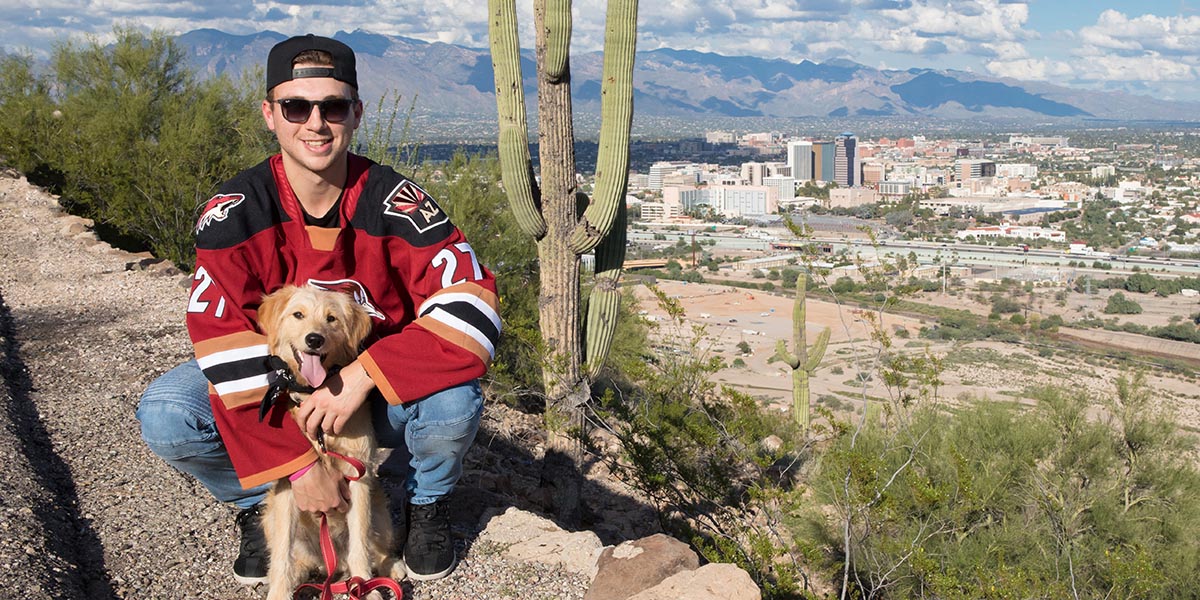
“A lot of people don’t know [about Tucson]. They hear Arizona and they hear hockey, and they don’t think it mixes. But when you come here, and I know guys that have played in other spots in the league, and they come here and they say this is the best place they’ve ever played, so we’re definitely lucky to play here.”
Garland, a long-time comrade of Bunting’s, agrees.
“I know a lot of guys who play in the league that I see in the summer who say, ‘We’re coming to Tucson this year,’ and they’re all fired up. When I talk to other players I know, Tucson’s their favorite place to be. In December, January, you’re walking outside and it’s warm out all day, it’s surreal sometimes. It’s a great place to play, it’s a great place to live.”
The secret may not be out yet: Tucson’s an easy city. Traffic isn’t a problem; the weather is more than kind; accessibility and affordability are still in vogue.
Said Mermis: “The ease of getting to the rink, the ease of waking up in the morning and knowing that the sun will be out, those are the types of things that become kind of habitual out here. You don’t even have to think about it anymore because you know what it’s going to be like.”
For the group of 20-plus names the Roadrunners roster on any given day, the majority of whom hail from the Northeast, Canada, and Nordic regions, Tucson has left a warm impression on players who make their living on ice.
Garland added: “Like I said, there’s just no place [in the AHL] that’s better.”
